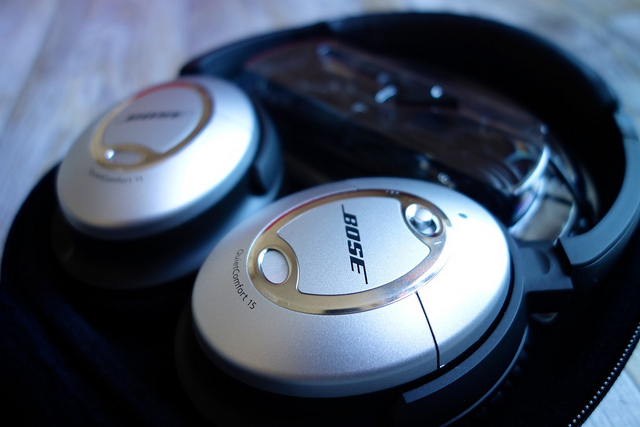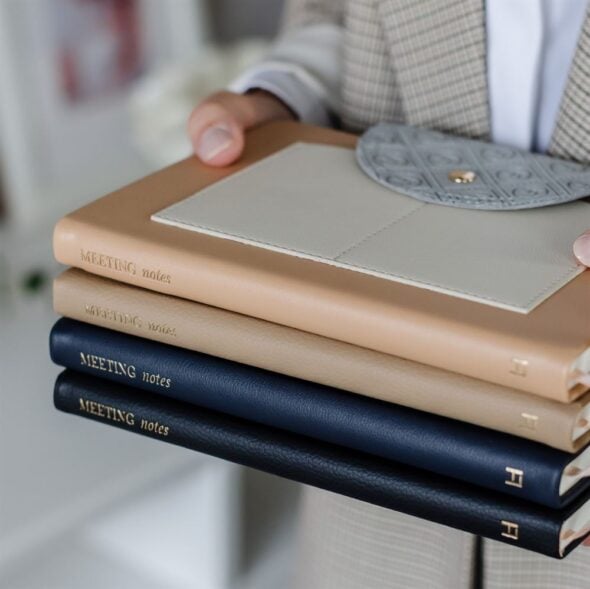When I lost the stock pair of headphones that came with my mobile phone, I decided to take my first step into the world of audiophiles and purchase a decent replacement set that didn’t blow my budget. What I discovered is that there’s a lot of factors to consider when buying headphones, and a lot of new terms to wade through.
So to save you all the trouble, I hereby present a quick guide to the world of headphones. This is very brief, but should give you a starting point!
Ear Buds
 Image by: Earl – What I Saw 2.0
Image by: Earl – What I Saw 2.0
This is the kind that normally come packaged with your mobile. They don’t go into your ear canal, but just rest inside your ear. But ask any audiophile, and they’ll swear up and down the sound from them can’t match any of the other types. Good if you don’t like huge headphones, and can’t stand the thought of inserting anything into your ear canal. Not so good if you’re in a noisy environment, and care a great deal about the quality of the music you’re listening to.
In-Ear Headphones
 Image by: Yutaka Tsutano
Image by: Yutaka Tsutano
Some mobiles come with these kind of headphones these days (such as my Samsung Note 2). These have a rubber or foam tip, and are inserted into your ear canal. If worn correctly, they should block out a good deal of outside noise, while being very comfortable. However, the feeling of something stuck deep in your ear can take a while to get used to! In terms of easily portable headphones, these and the buds are your best choices. A lot of these in-ear headphones also have very good sound quality–though if you’re not an audiophile with high quality music and a dedicated player, you probably won’t be able to hear much (if any) difference between the mid and high-end headphones. Even some of the cheaper ones produce quite good sound.
These are the type of headphones I eventually bought. There’s a fantastic, constantly updated list with reviews and ratings here.
Noise Cancelling Headphones
 Image by: LoKan Sardari
Image by: LoKan Sardari
These are the other type of headphones commonly favoured by travellers. They come in all kinds of form-factors, but the most common is a full-sized on or over ear. They really do work on a noisy bus, train, plane or whatever mode of transport you may prefer. Their sound quality is known to be lacking compared to other full-sized headphones because the noise-cancelling can interfere or degrade the music being played back. I will say, though, that the quality’s never been bad enough for me to notice, on the Audio-Technica pair that I own. The Bose brand, especially, is known to have great noise-cancelling abilities without compromising much on sound–but they come at a price.
On-Ear and Over-Ear Headphones

Image by: HK-DMZ
I won’t spend much time on these, since most people prefer not to travel with full-size headphones. Not to mention, if you get a higher-end pair they generally need a dedicated amplifier to sound their best–not really something you’d hook up to your mobile or iPod, for example. Of course, there are smaller, foldable pairs for travel, or even smaller ones reminiscent of the ones you get on airplanes, but of course, the sound quality on those won’t be good as an average in-ear headphone. Also, if you’ve ever used the standard airplane headphones, they don’t block out external sound very well either! But for the proper ones, their sound quality these can’t be beat. Because they go over your ear and have more power for bass, you get a much fuller sound.
Other Useful Terms
If you do start looking into headphones, you’ll also come across a lot of unfamiliar terms, so here’s a quick and dirty glossary of the more common ones.
Accuracy: How much the headphones distort the originally recorded sound. Some might increase the bass, for example.
Analytical: Headphones described as such have great definition (see below).
Bass: The lowest sounds, generally defined as up to 250Hz. In practical terms, the thump or low rumblings you hear in music, generally below normal speaking range.
Detail (or Definition, or Clarity): How clearly you can hear the different sounds, especially the small details. Some audiophiles who own headphones with great detail can even determine just what the instruments being played are made out of! Conversely, headphones with a lack of detail will mix all the different sounds so although you can make out the music, the various instruments are an undistinguishable mass (muddy).
Isolation: How well the headphones block out external sounds.
Mids: The midrange sounds, defined as between 250 and 6000Hz. In practical terms, general talking and singing range (if not going too high!)
Microphonics: Generally only applicable to in-ear headphones, this is the noise the cable makes in your ear when it bounces or rubs against items.
Recessed: Part of the sound doesn’t come across as strongly as others. For example, if someone talks about recessed mids, then the middle sounds are weaker compared to the bass and higher ranges.
Soundstage: How well the headphones can make you feel like you’re in a concert hall. Headphones with larger soundstages tend to be better, because it means that they can make it seem as though the sound is coming from all around you, at different distances.
Treble: The highest sounds, generally defined as anything above 6000Hz. In practical terms, think sopranos, violins, piccolos, etc.
Do you have a favourite pair of headphones? Tell us about them in the comments!
Featured image: Louish Pixel



